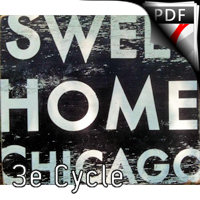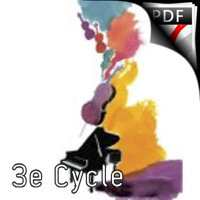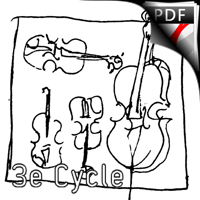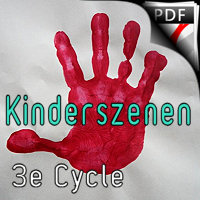Download your PDF score!
By music teachers, for their students
| Title | Author | Set | Prices | ||
|---|---|---|---|---|---|

|
Badicordes |
Jean-Jo Roux |
Quatuor à Cordes |
14.90€ |
|

|
Sweet Home Chicago |
Robert Leroy Johnson |
Sextuor à Cordes |
19.90€ |
|

|
Memphis Station |
Laurent Colombani |
Sextuor à Cordes |
14.90€ |
|

|
Oblivion |
Astor Piazzolla |
Quatuor à Cordes |
14.90€ |
|

|
Lullaby |
George Gershwin |
Quatuor à Cordes |
14.90€ |
|

|
Toutes les Choses qu'on lui Donne (All the Things We Give Him) |
William Sheller |
Chant et Quintette à Cordes |
14.90€ |
|

|
Libertango |
Astor Piazzolla |
Quatuor à Cordes |
14.90€ |
|

|
Four Brothers |
Jimmy Giuffre |
Sextuor à Cordes |
14.90€ |
|

|
Kinderszenen (Clarinet and String Quartet) |
Robert Schumann |
Clarinette et Quatuor à Cordes |
14.90€ |
|

|
Well-Tempered Clavier BWV 871 (String Quartet) |
Jean-Sébastien Bach |
Quatuor à Cordes |
5.90€ |
The origins of the string quartet can be traced back to the baroque trio sonata, in which two solo instruments accompanied by a basso continuo such as the cello or keyboard. An early example is a four-part sonata for string orchestra composed by Gregorio Allegri (1582-1652) which could be considered a "prototype" of the string quartet.
In the early 18th century, composers often added a third soloist. In addition, it became common to omit the keyboard part, leaving only the cello to support the bass line. Thus, when Alessandro Scarlatti wrote a series of six scores entitled "Sonata a quattro per due Violini, Violetta (Alto), e senza Violoncelle Cembalo" (Sonata for four instruments: two violins, viola, and cello without harpsichord), it was a natural evolution of the existing tradition.
Wyn Jones also suggests another possible source for the string quartet, namely the widespread practice of playing scores written for string orchestra with only four players.
The string quartet came to prominence with the work of Joseph Haydn. It seems that Haydn wrote his first quartets by chance: The young composer was working for Baron Carl von Joseph Edler von Fürnberg around 1755-1757 in his country house in Weinzierl near Vienna. The baron wanted to hear music and the available musicians were two violinists, a violist and a cellist.
Haydn went on to write nine more scores for quartets during this period. These works, published in his Op. 1 and Op. 2, an unpublished quartet, and some of his early "quartets" are in fact symphonies in which the wind parts are missing. They have five movements and take the following form: a fast movement, minuet and trio I, slow movement, minuet and trio II, and the fast finale.
Haydn then stopped writing quartets for a number of years, but took up the genre again in 1769-1772 with the 18 quartets of Op. 9, 17, and 20. These scores are written in a form that has become established as a standard for both Haydn and other composers, namely four movements, consisting of a fast movement, a slow movement, a minuet and trio and a fast finale.
Quartet compositions flourished in the classical era, with Mozart, Beethoven and Schubert signing several famous scores to put alongside Haydn. A slight slowdown in the pace of quartet composition occurred in the 19th century. Antonín Dvořák wrote a series of 14 quartets. With the beginning of the modern era of classical music, the quartet became popular again among composers and played a key role in the compositions of Arnold Schoenberg, Bartók Béla and Dmitri Shostakovich in particular. After World War II, some composers such as Pierre Boulez and Olivier Messiaen questioned the relevance of the string quartet and avoided writing any. However, since the 1960s, many composers have shown a renewed interest in the genre.
Our PDF scores for String Quartet come with separate parts and conductor. You will find George Gershwin's unique string quartet "Lullaby".
